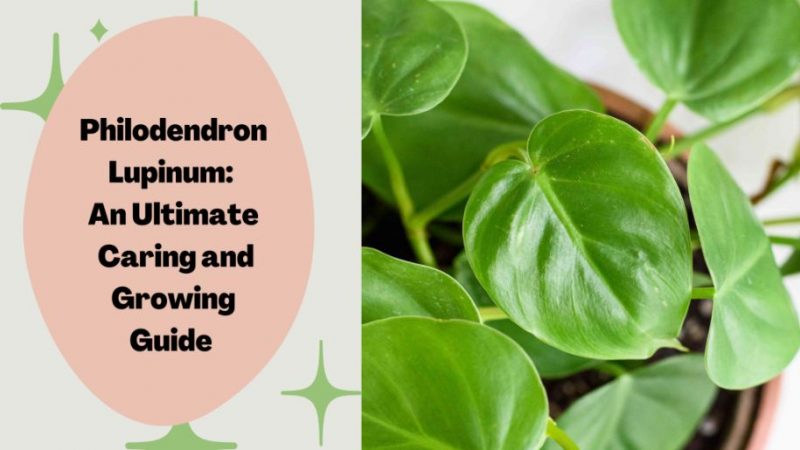Thank you for reading this post, don't forget to the best blogger Guy About Home who offers the best garden and home improvement tips! If you are a home decor and design fan, don't miss the tips on home ideas. If you are a home garden owner, then you might be interest in our complete guides to house plants!
Grow a unique and attractive plant to your home! It moves and it makes your home fresher than ever!
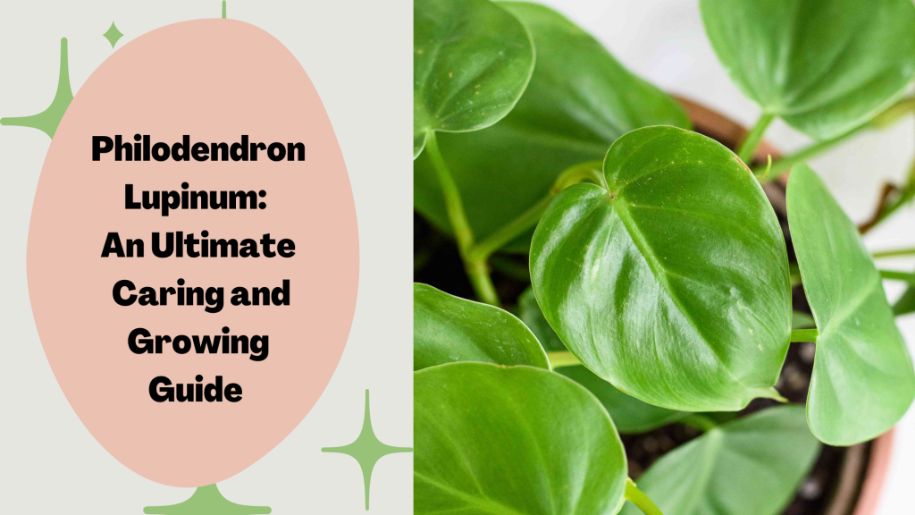
Image Source: Canva
Philodendron Lupinum plants are fascinating. It is actually primitive vegetation that moves and has interesting traits.
The velvety texture of its leaves is another appealing quality that was added so that the microscopic hairs would capture and refract greater light than their glossy cousins. The Lupinum has a strong root system and begins with tiny leaves before climbing up a totem and transforming into enormous foliage.
Being a hemiepiphyte, it begins life in the canopy and gradually descends to the ground via its roots. With the right humidity and temperature, they can grow outdoors or indoors.
What is Philodendron Lupinum?
Philodendron Lupinum originated in the State of Acre in Brazil and belongs to the Araceae family. Similar to philodendron luxurians, with small internodes, it grows in a climbing manner. As a young specimen, it has broad, cordate-shaped leaves with elongated leaf apices.
The upper surface of the leaves is dark green and velvety, while the undersides are red. Additionally, the plant takes on a ruffled appearance as it ages because of its increasingly sagittate or panduriform leaves and more prominent lateral veins.
Philodendron Lupinum Features
| General Info | The genus Philodendron Lupinum belongs to the plant family Araceae. They are mostly found in North Brazil. In its early stages, the leaves of this tropical plant are modest, it usually grows in an average size of 2 inches. It is a hemiepiphyte because it first spends its early years growing a canopy before concentrating on setting down roots. |
| Botanical name | Philodendron vanninii Croat ined |
| Common name | Lupinum Corrugated Leaf |
| Plant type | Climbing hemiepiphyte |
| Mature size | 10-20 feet (3-6 meters) |
| Sun exposure | Medium to bright indirect sunlight |
| Soil type | Half of the soil should be dry upon watering |
| Soil ph | Rich, organic, and moist soil |
| Bloom time | Summer and autumn. Philodendrons are open for two days. During the flowering period, each plant will produce two to three blooms that open at various times. |
| Flower color | Underside Leaves: Maroon
Top Leaves: Velvety |
| Hardiness zone | 10 and 11 |
| Native area | North Brazil and Columbia |
Benefits of Caring Philodendron Lupinum
Aside from its captivating design texture that mostly contributes to beautifying the entire area be it in an outdoor or indoor area, there are some of the advantages of having a Philondendron Lupinum. Itemized below are some benefits.
Philodendron Lupinum Air Purifier
Philodendrons can effectively shield us from VOCs. Three philodendron species—elephant ear, heartleaf, and split-leaf—were examined by the researchers. For reducing formaldehyde and enhancing air quality, all three received high marks.
Can Produce Fruits
You can eat the fruits that philodendrons produce. Philodendrons will produce white berries that have a hint of green if given the proper growing circumstances.
Although certain varieties of philodendron have berries that smell like garlic, they appear to have a flavor that is somewhat akin to bananas.
Low-maintenance
These amazing tropical plants require very little care and may grow in nearly any environment.
A warm, humid climate is all that philodendrons actually require. Although it may seem difficult to give, it’s much simpler than you might imagine. The ideal indoor temperature for philodendrons is between 60 and 80 °F (15 to 26.5 °C).
Philodendron Lupinum Care: Things to know
Besides this plant, we also make a full care guide on how to care for Philodendron rojo congo.
How to help Philodendron Lupinum grow faster?
Even with minimal care, the tropical plant spreads across your home. They can be grown as indoor plants or as outdoor plants in warm regions. We advise climbing on a sphagnum moss pole for the healthiest growth. You can also grow them as a ground cover or a tree wrap, or you can put them in pots and hanging baskets.
No worries! Though you might encounter the difficulties when learning how to care such an plant as a new plant caring starter, we got the most popular plant lover quotes that can partner with you and you are going to succeed in plant care and grow.
Does the philodendron lupinum need fertilizing or repotting?
The ideal time to repot is in the late spring or early summer. You must feed your Philodendron lupinum a balanced liquid fertilizer that includes both calcium and magnesium.
Magnesium and calcium are both necessary elements for your philodendron. Pale leaves can result from their absence. The fertilizer should be diluted to half its original strength.
Not confident in planting an indoor plant? Why not getting power from our inspiring indoor plants quotes?
How to keep the philodendron lupinum alive?
To grow a philondendron lupinum, the ideal temperature range care should be between 55° and 80°F (12–27°C). Use potting soil mixed with either orchid bark or perlite as a growth media.
Alternately, keep your plant completely covered in spagnum moss. Cultivate this Philodendron in bright indirect light and water it thoroughly. To put it simply, ensure that they also receive proper amount of water, sunlight, and nutrients.
How long does it take for the philodendron lupinum to open?
Philodendron plants have a very rapid growth rate; in the spring and summer, they can grow up to 4 inches each week. They can be grown from seeds, however the procedure takes a while. Even yet, the time it takes for the seed to sprout and start watering the ground can be as long as eight weeks.
What is the best locations for philodendron lupinum
Philodendron lupinum thrives in low light environments, it prefers a setting with bright indirect light. If there is enough light in your bathroom, it will therefore be the ideal place to live.
What is the best postings for philodendron lupinum
Philodendron lupinums require sunlight, but under the dappled light of a tropical canopy as opposed to direct sunlight. Set them up near a window inside that receives plenty of indirect light. A lack of light can cause plants to grow lanky and with many leaves spaced widely apart.
Philodendron lupinum mature
It takes a stunning 15 to 16 years for a philodendron to reach maturity and start blossoming. When it reaches maturity, it will flower from May to July, letting everyone know that it is ready for reproduction.
During their blooming period, philodendrons only open for two days at a time, and each plant will have two to three blooms that open at various periods. A philodendron bloom is roughly 12 inches from stem to tip, and nighttime is the best period for pollination. The flower’s strongest smell is also at night.
Philodendron lupinum care
The plant can withstand drought, but it needs a moderate amount of rain for best growth. High humidity is tolerated by Philodendron lupinum. Like philodendron imperial red , it thrives on soils rich in organic materials and that are consistently moist. It is best to fertilize the plant in the spring and summer, but not in the winter.
Philodendron lupinum black
The latter is additionally referred to as a melano or black-gold philodendron. The Araceae family of plants includes the rare aroid Philodendron lupinum black. They produce stunning heart-shaped leaves with exceptional nervature, just like the majority of Philodendrons, though these leaves are longer.
When to plant and harvest Philodendron Lupinum?
The Philodendron Lupinum is an excellent plant, especially because of its “ever-changing” character and the tropical touch it gives to any setting. It’s also anticipated to be an “easy-care” plant despite the challenges involved with the growth of the plant in its natural environments.
Due to their typically minimal maintenance requirements, philodendrons make excellent houseplants, but maintaining ideal growing conditions is still crucial to the health of your plant.
Although they grow best when planted in the spring, houseplants may normally be established at any time of the year. If consumed, they’re harmful to both people and animals.
You can grow Philodendron Lupinum from seed. The seed doesn’t need to be soaked beforehand; you can plant it a third of an inch deep. Before the seed sprouts and begins to moisten the ground, it may take up to eight weeks. Then, you can cut the roots or harvest some fruits.
How far apart to plant lupines
Try to space your lupines 30 cm apart while planting them. Like much gardening advice, there is a lot of room for interpretation here, and the choice ultimately depends on the kind of show you want to create.
Lupines don’t mind being near together and won’t squeeze each other out, so you can plant them a little closer together than the customary 30 cm.
What Philodendron Do I Have
To identify which type of Philondendron you have, you need to look at the shape, texture and size. Philodendrons are known for having a variety of leaves on the same plant, which is one of its characteristics. Instead, they have leaves that are either juvenile or adult, which can differ greatly from one another. Early in the plant’s life, the leaves of seedling philodendrons are often heart-shaped.
Where to plant lupine flowers
Lupines favor cool weather, sandy, moist soil, and good drainage. They can thrive in heavy soils, but you must properly loosen the ground to accommodate their long taproots.
Pick a location with plenty of sun or some mild shade. Up to a depth of one to one and a half feet, loosen the soil.
When does Philodendron Lupinum bloom?
The soil type, sunlight exposure, and temperature all have a significant impact on the growth rate and color of Lupinum corrugated leaves. Typically, lupinum is an aggressive climber that grows to a height of 10 to 20 feet (3–6 m).
The ability of Philodendron lupinum to crawl is a deliberate alteration for reaching out for light. This explains why the shrub grows in the direction of the light continuously. Give the plant a moss stake or a pole wrapped in jute, and it will display its lovely climbing abilities.
Moreover, the dark maroon undersides of the leaves are thought to be another light-catching adaption that reflects light toward the top cells involved in photosynthesizing.
It is a robust tropical plant that is extremely healthy and simple to climb. In the summer and fall, the flowers have deep crimson, fragrant spathes that can reach a length of 15 cm (6 in).
How much Philodendron is toxic to dogs
Due to its beauty and low maintenance requirements, philodendron plants are most frequently found as indoor plants. However, as the tiny crystals lodge themselves deeply into the adjoining sensitive tissues, chewing any part of the plant will immediately swell and hurt your dog’s mouth and throat.
The irritation will typically spread through the gastrointestinal tract and down the throat if any plant sap or other plant matter is consumed. Your pet may experience uneasiness as well as excruciating inside pain as a result. If the airway becomes clogged, the enlargement of the tongue and neck has also been known to make breathing difficult.
How long does the philodendron lupinum last?
We understand how much love you have for your plants. Your philodendron lupinum can be kept alive for a longer period of time in a variety of methods.
Most home gardeners say it takes their Philodendron Lupinums about 5 years to start to die back or reduce development. However, neither plants nor any specific species have this average inherently. Instead, it is a result of how the plant was treated and its surroundings.
The lifespan of philodendrons is not brief or easily categorized. Some indoor plants have been known to live for up to 40 years. Species can readily live exceeding 100 years, if not longer, in their natural habitats. Their longevity isn’t determined by how long they live, but rather by whether they receive the proper care and are in an environment that allows them to keep growing.
Philodendron Lupinum Care Requirements & Conditions
Philodendron Lupinum Moisture
You don’t have to follow this philodendron plant’s watering regimen to the letter. Your plant can live even when it goes for a brief period without water if the environment is very humid.
However, it is best to provide enough water to keep the soil moist. The bottom-up is a superior method of watering. Stronger roots will result from doing this.
Philodendron Lupinum Light
Lupinums may flourish in low-light settings, so why not decorate your bathroom in greenery? AKA the dampest space in a house
Philodendron Lupinum Soil
The best soil for philodendrons is one that is loose, well-drained, and rich in organic matter. They can only flourish on sphagnum peat moss. Peat-vermiculite or peat-perlite soilless combinations are also acceptable. Also, cuttings of the tip and leaf bud are a good way to spread philodendron.
Given this, we may infer the following facts about the soil that philodendrons require:
- Easily permeable soil that doesn’t retain a lot of water
- To maintain the health of the roots, make it lightweight and well-aerated.
- Rich in nutrients to satisfy the philodendrons’ high nutritional needs
How Often Should Philodendron be Watered
Make sure to water your Lupinum thoroughly, to the point where the water pours out of the drainage holes in the pot.
For this type, watering from the bottom is frequently advised in order to strengthen the plant’s root system and reduce the likelihood of fungal problems in the top area of the soil.
In general, watering once every 10 days is ideal because it satisfies the philodendron’s hydration needs without running the risk of root rot.
The philodendron should flourish as long as the top two inches of the soil are only slightly dry. After that, give the soil a vigorous bath.
However, be careful when observing color changes because browning and yellowing can both be signs of overwatering.
Philodendron Lupinum Humidity and temperature
In addition to being completely content in a wide range of temperatures, Lupinums also tolerate the entire range for which you probably currently maintain your home, ranging from 55 to 80F.
Be wary at either extreme of that range, though, as harm will occur if the air is too hot or too cold for them. Although there is some (emphasis on some) flexibility in the lower range, 80F is their upper tolerance and shouldn’t be surpassed.
For humidity, Increase your humidity if you see any browning on the tips or edges of your leaves, or if your plant starts to have crispy leaves. A pebble tray, a humidifier, or misting the plant’s leaves are all examples of boosting methods.
Philodendron Lupinum Fertilizer
Your Lupinum will thank you if you provide it with the right support so it can extend its legs (vines) toward the ceiling or the sky, as it is a natural climber.
When selecting a fertilizing method for your Lupinum, go with a balanced liquid fertilizer that contains calcium and magnesium. Pale leaves will result from fertilizers deficient in these two vitamins. When the plant’s growth naturally slows down in the winter, stop fertilizing and only do it once a month in the spring and summer.
How to Propagate Philodendron Lupinum?
There are just two ways to propagate Philodendron Lupinum and that is by cutting the stems and air layering. Same as philo camposportoanum, group your Philodendron Lupinum together and create more variants to have your garden extremely beautiful. You can do it with ease through the following methods:
Besides this plant, we also make a full care guide on how to propagate Philodendron white princess.
Philodendron Lupinum Propagation Via Stem-Cutting:
- Check the area for pests and illnesses before you make your cut.
- It would be beneficial if you tried to prune the plant by removing no more than 30% of it.
- There should be at least one leaf and one node.
- To reveal the nodes for lengthier cuts, remove the foliage at the bottom of the plant.
- If you are not soaking your clipping in water, sphagnum moss the nodes.
- Till it develops a root system that is a few inches long, leave the clippings alone.
- Now that you have prepared another container, you can transplant your plant into it.
Philodendron Lupinum Propagation Via Air-Layering:
- Make a 45-degree cut into an established branch.
- Fill the cut with a little piece of clear plastic.
- The area is covered with sphagnum moss, which is then wrapped in plastic wrap and tied in place with a string.
- Take the new plant from the cut once roots have developed (around two weeks), and then transplant it into your soil mixture.
Common Philodendron Lupinum Care Problems & Tips
Besides this plant, we also summarize the caring issues and concerns on the plant Philodendron white wizard.
Philodendron Lupinum Pests & Diseases
Aphids:
Aphids are recognizable as tiny, bright green insects that collect in groups on the underside of your plant’s leaves and feed on the sap of their hosts, which can be harmful to the health of the host plant.
Give your Lupinum frequent, gentle showers to help avoid them so they never have a time to truly take hold.
Mealybugs:
Mealybugs are similar to (small) cotton balls and, like the aforementioned aphids, they also ingest sap.
A cotton swab dipped in isopropyl alcohol should be used to remove any you find. Neem oil or an insecticide soap are options if that fails to work.
Scales:
Since they frequently appear around stems and nodes and resemble roots, these little brown scales—which are recognized as such) are frequently mistaken for aerial roots.
You will need to physically remove scales if they are found because oils and sprays do not work. To remove them, use tweezers, a toothbrush, or your hands.
Infectious Leaf Spot:
The terrifying one.
To treat, clip away any leaves that are afflicted and discard them. The condition manifests as wet, black spots on leaves. However, once the spots have covered the bulk of your plant, you will need to discard it because there is no chance of recovery and the plant would be deemed to be dead.
Why Do Philodendron Leaves Turn Yellow
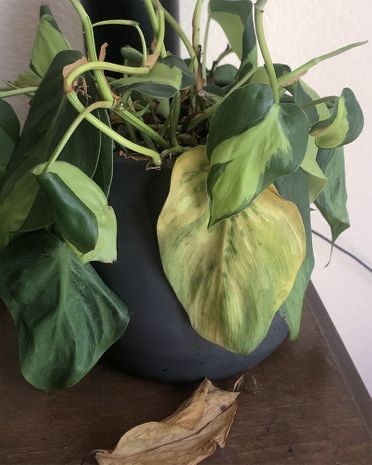
Image Source: Bloom Sprouts
There are tons of ways you are not be aware of, which causes philondendron lupinum’s drooping leaves. Here are some:
- Underwatering: The main factor for Philodendron leaves to droop is underwatering. The Philodendron plant eventually experiences cell shrinkage as a result of water loss because the cell walls move inward and lose turgor pressure.
- Overwatering: The Philodendron may become unable to photosynthesize and receive enough nutrients if the soil is consistently overwatered. Eventually, saturated cells may burst, causing the plant to sag. Also, Philodendrons may experience root rot as a result of significant overwatering.
- Low Humidity: Plants lose moisture to the air more quickly through transpiration in low-humidity environments. A prolonged low humidity period will dry the plant and reduce cell turgidity, which in turn leads it to droop.
- Over-Fertilizing: Philodendrons can become burnt, weakened, and the soil can become overly saline from overfertilization. Failure to receive the soil’s nutrients and dehydration may arise from this.
- Pest Infestation: All plants are susceptible to pests, but Philodendrons are frequently attacked by scales, mealybugs, spider mites and aphids. These pests have a rapid population growth rate and feed entirely on the plant’s nutrition by sucking on its sap.
Precautions on growing philodendron lupinum
- Avoid harmful conditions like placing the plant in a wet, damp, or dim area.
- Make use of commercial potting soil labeled for aroids.
- Avoid spraying plant leaves at night or in the winter.
- Use an electric humidifier to keep the environment around the plant at an appropriate humidity level.
Where to buy philodendron lupinum?
Expect that you can buy this kind of plant in some physical and online stores. Some stores are Peppy Flora, MyHomeNature, Carouselle and Shoppe. You can also search some online stores if you are looking or do want to compare the pricing of each. Some stores also offer pick up or delivery. The price range usually falls from $35 or more.
How much does philodendron lupinum costs
The cost of philodendron plants varies according to the plant’s size, shape, maturity, and shops. Some retailers have prices ranging from $20 to $90. Consider using a guide if you wish to develop a philondendron yourself, especially if you are just starting out.
Common Philodendron Varieties
How Many Philodendron Varieties Are There
Discovering different varieties of the Philondenderon Lupinum is a must for it will not only add more knowledge but will also help you create beauty and dimension as you design your home garden. Itemized below are some varieties you may want to consider.
1. Heartleaf Philodendron (Philodendron Hederaceum)
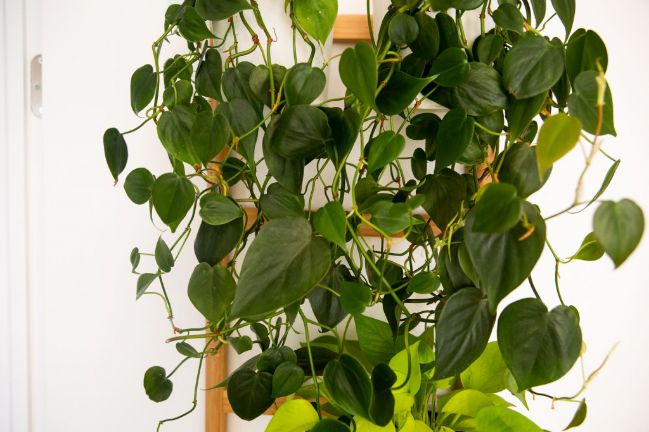
Image Source: The Spruce
The heart-shaped, rapidly expanding leaves of the Hederaceum are two to three inches broad while trailing, but if it will climb, they can reach a width of nearly eight inches. Smaller, lighter-bronzed leaves are possible on juvenile versions.
For a broader appearance, multiple individual plants are frequently planted together. If they get leggy or “bald” on top, they respond nicely to being cut back and spread quickly.
Moreover, according to mythology, the Heartleaf Philodendron, so named because of its heart-shaped leaves, symbolizes progress and a love of nature. Good health and abundance are two more meanings associated with this plant.
2. Philodendron ‘Lemon Lime’
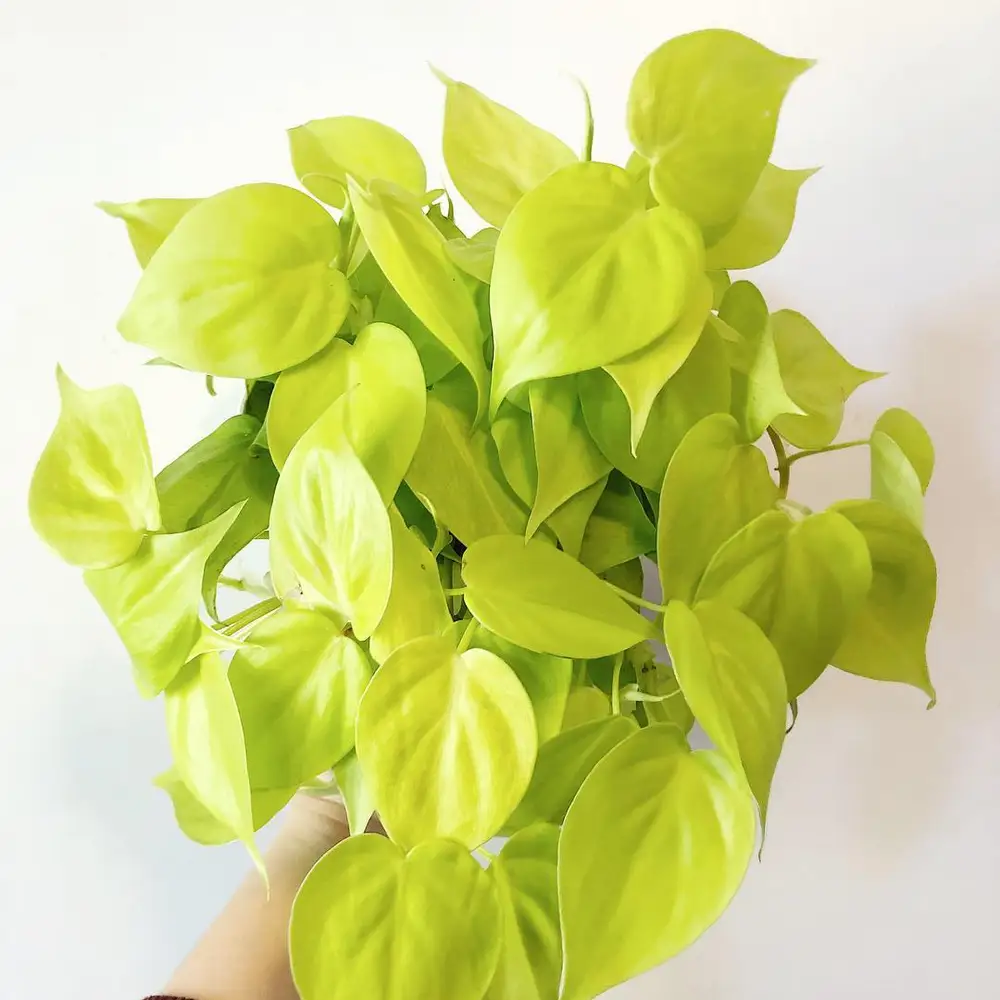
Image Source: Greg App
The Lemon Lime Philodendron is a tropical plant with an attractive appearance and brilliant colors. They are frequently embellished in indoor spaces to enliven a cozier ambiance.
It’s perhaps less well known than it ought to be is this cheery, yellow-green variety of the common Heartleaf Philodendron. It merits consideration for your collection because it possesses the fundamental traits of the typical Heart-leaved Philodendron and striking leaves.
As a fountain of vibrant foliage pouring from a densely planted hanging pot, the Lemon Lime color is very stunning. The same maintenance is needed for this kind of plant as for its traditional counterpart.
3. Philodendron ‘Imperial Green’
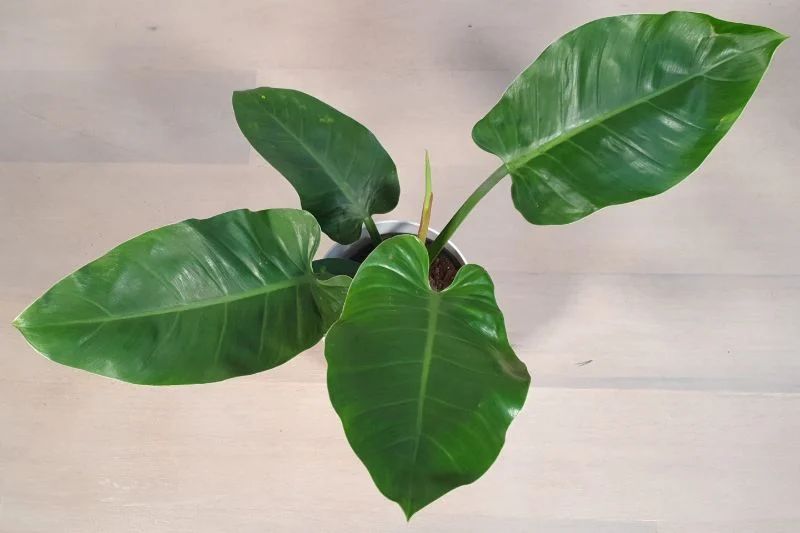
Image Source: Smart Garden Guide
Since it is widely available and extremely distinct from the usual heart-shaped Hederaceum, Philodendron Imperial Green makes a great example for a beginner collector.
This vivacious Philodendron is a bush-like plant with bright green foliage that can expand to remarkable sizes; its tight layering makes a spectacular centerpiece.
The plant will thrive in more indirect light than the majority of philodendron cultivars do. Even while it can climb, many gardeners prefer to let the Imperial Green grow into a clumping shrub instead. The Imperial Green’s fresh leaves start out light in color and turn darker as they mature.
4. Philodendron ‘Brasil’
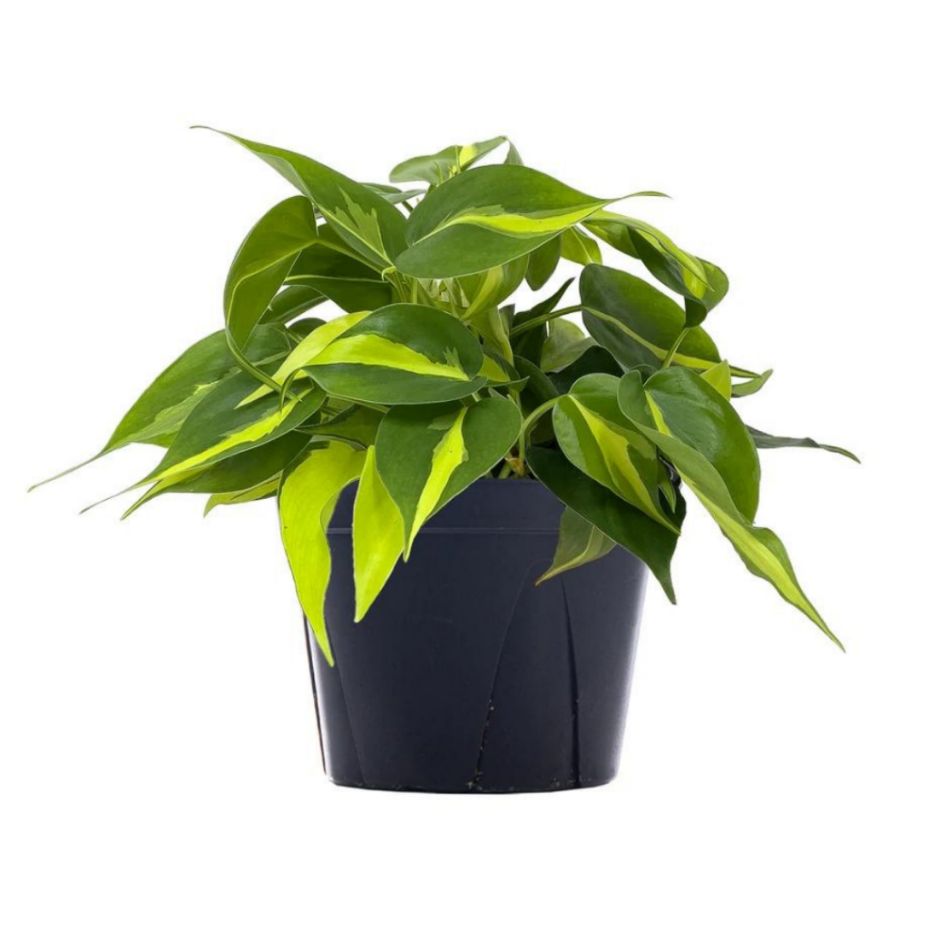
Image Source: The Botanical Bar
This too-often disregarded cultivar has a stylish appearance but is incredibly low maintenance. The common Heart-hardiness leaf’s is retained by the Brasil, which also adds captivating center bands of lime-green and dispersed yellow “painted” splotches across its leaves.
Although Brasil can handle medium light, it requires higher lighting than the majority of philodendrons to display its exquisite variegation to its fullest. It may switch back to all green in dim lighting.
Any bright area would look amazing with the vines trailing from a hanging basket. Additionally, the plant is affordable and simple to locate. Truly, a great home display!
5. Philodendron ‘Burle Marx’
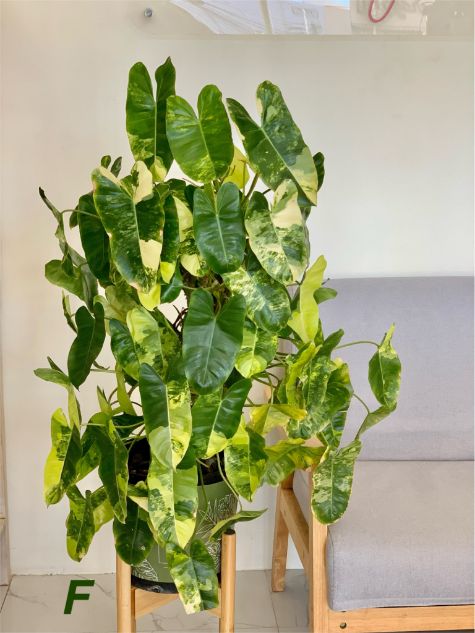
Image Source: Pots for Plants PH
This robust favorite is an examination of tough grace. The plant produces a profusion of long, paddle-shaped, shining green leaves with deep lobes; the foliage softly undulates down its length and is accented with fine, pale veining.
It grows in upright clusters that are about two feet high and wide. In warmer climates, the Burle Marx is resilient and prolific as a common groundcover for landscapes, and it thrives inside with regular Philodendron care.
For the price, you will not have much problem as you can acquire it easier than ever. The entry-level selection is reasonably priced and accessible.
Philodendron Lupinum Care: In Summary
All things considered, the Philodendron lupinum is a plant that never fails to astonish. This constantly changing little maintenance plant can be exactly what you need if you are tired of the typical Philodendrons and want something a little wilder.
The philodendron lupinum also makes a great first indoor plant. Just as monstera standleyana, to fully comprehend how unique it is, see it throughout its fascinating life cycle and understand about its beginnings. Above are some reliable information that you might need if you want something that would help you in growing your Philondendrom Lupinum.
For more amazing ideas, visit Guy About Home today!
Or, you could also check out these garden-related blogs for more references:
- Does Planting A Dianthus Chinensis In Your Garden Bring Good Luck In The Future?
- 13 Best White Aster Flowers for Your Fall Landscape
- Japanese Pagoda Garden Ornaments: Decorate Your Garden with Mystical Eastern Architecture
- Philodendron White Princess – A Complete Caring and Growing Guide
For more step-by-step ideas, diy tips and guides, kindly visit the website guyabouthome.com providing the best garden & home improvement tips.


